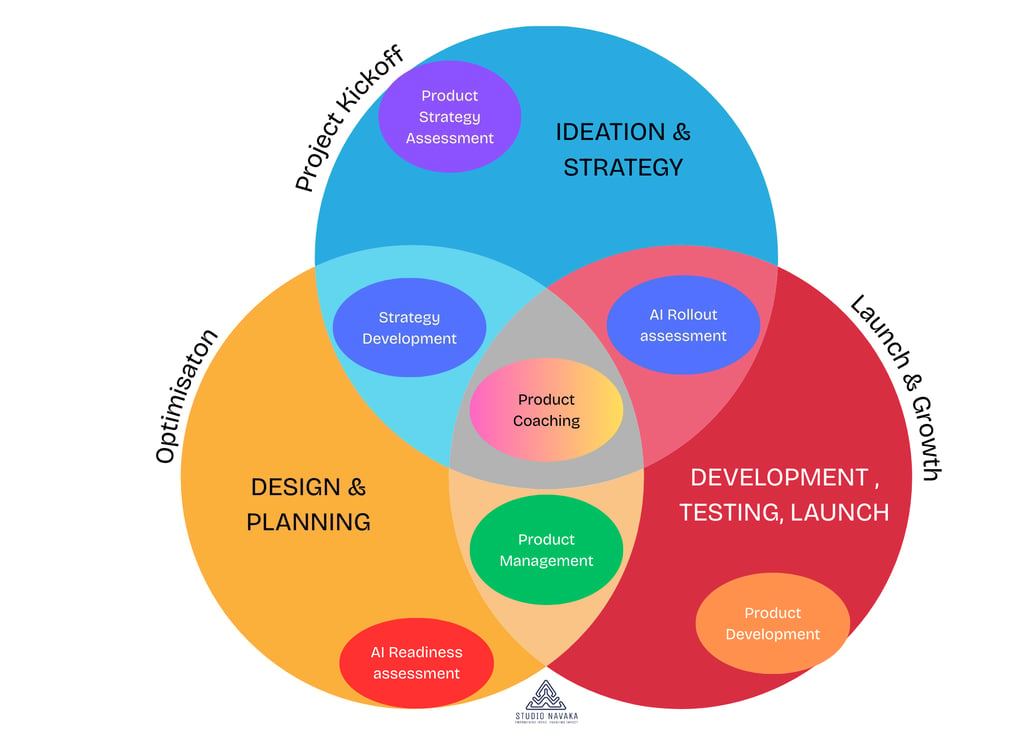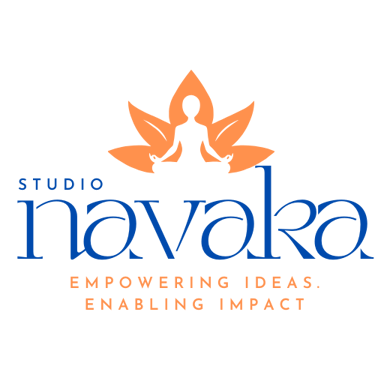Why Product Strategy is Important?
3x Faster time to market
60% reduction in future waste
2x increase in PMF success
40% increase in Team Productivity
3x times customer retention
80% better alignment with Business Goals
5x times investor confidence
Decrease chances of failure by 75%
Why Product Strategy is key to building winning Products?


Most products fail not because they're poorly built, but because they're built for the wrong reasons, for the wrong people, at the wrong time.
Product strategy is the bridge between ambitious vision and market reality. It's what transforms "wouldn't it be cool if..." into "customers will pay $X for Y because Z."
The Strategy Gap That Kills Products
Without strategy, product teams fall into three deadly traps:
Feature Factory Syndrome – Building endless features based on whoever shouts loudest (usually sales or the CEO's latest conference insight). The result? Bloated products that do everything poorly and nothing exceptionally well.
Solution-First Thinking – Starting with "we should build X" instead of "customers struggle with Y." This leads to elegant solutions to problems nobody actually has.
Execution Theater – Moving fast on perfectly executed plans that take you nowhere. Velocity without direction isn't progress – it's expensive wandering.
What Great Product Strategy Actually Does?
The best product strategies don't just describe what to build – they create unfair advantages:
Forces Brutal Prioritization – Strategy is as much about what you WON'T do as what you will. When Slack decided they weren't building a project management tool, they could obsess over making team communication delightful.
Aligns Teams Around Outcomes – Instead of feature debates, teams argue about customer problems and business impact. Marketing, sales, and engineering finally speak the same language.
Accelerates Learning Velocity – With clear hypotheses about who your customer is and what they value, every experiment teaches you something valuable. Random A/B tests become strategic experiments.
Creates Defensible Moats – Understanding your unique value lets you double down on advantages competitors can't easily copy. Notion's flexible block system wasn't just a feature – it was their strategic bet on how people actually want to work with information.
The Compound Effect of Strategic Clarity
Here's what happens when product teams get strategy right:
Development velocity increases because there's less thrashing and rework
Customer acquisition becomes easier because your value proposition is crystal clear
Feature adoption improves because every release solves real problems customers care about
Team morale stays high because people understand how their work connects to customer impact
Fundraising becomes smoother because you can tell a coherent story about market opportunity and execution
The Cost of Getting It Wrong
The companies that skip product strategy don't fail fast – they fail slowly and expensively. They burn through runway building features customers don't adopt. They hire great people who leave because the product vision keeps changing. They raise money based on vanity metrics that don't translate to sustainable growth.
Product strategy isn't overhead – it's the highest-leverage work you can do.
The difference between successful products and failed ones usually isn't execution quality. It's whether someone took the time to figure out what success actually looks like, for whom, and why.
Your product strategy is your forcing function for the hard questions: Who is this really for? What outcome do they desperately need? Why will they choose you over doing nothing? How will you know if you're winning?
Answer these questions before you write code. Your future self – and your customers – will thank you.
Where does Strategy exactly fit in?
Frequently Asked Questions
What kind of companies do you work with?
I work with startups, scale-ups, and innovation teams inside larger organizations. Whether you’re launching a new product, refining an MVP, or scaling an existing product, we tailor our support to your current stage and goals.
What does a Strategic Product Technologist actually do?
Think of me as a high-leverage, on-demand partner. Instead of hiring a full-time PM, you get strategic expertise and execution support exactly when you need it — without the overhead or ramp-up time. Most importantly, we are a cost effective service, saving you a lot of time and money.
I help you define what to build, why it matters, and how to deliver it. That includes user research, competitive analysis, prioritization, roadmap planning, and aligning product goals with your business strategy.
How is this different from hiring a Product Strategist?
Do you offer only Strategy, or help with Execution?
My experience spans across SaaS, PropTech, EdTech, HealthTech, marketplaces, and platform products — with a strong focus on digital-first businesses in the Asia-Pacific region.
What industries you work with?
Both. I start with strategy but stay hands-on through execution — collaborating with your design, engineering, and marketing teams to drive real outcomes.
Can you coach our team to become Strategists?
Yes. This is one of my core competencies
Can you help with Tech Stack & Development?
Of-course. Product Strategy includes Technology Strategy
Do you do online? Or only off-line?
I would prefer off-line in your office. However, if you want me to delivery online, can do that too.
98/3, Albert Coates Lane, Melbourne. VIC 3000
+61.439 221 811
© 2025. All rights reserved.
Australia
India
+91.991 991 8252
325, 4th Cross, OMBR Layout, Banaswadi, Bengaluru, Karnataka 560043
Studio navaka
studio navaka llp
